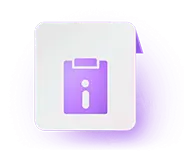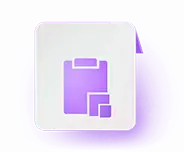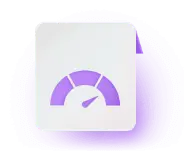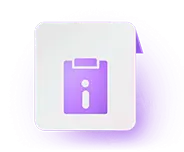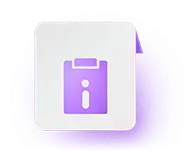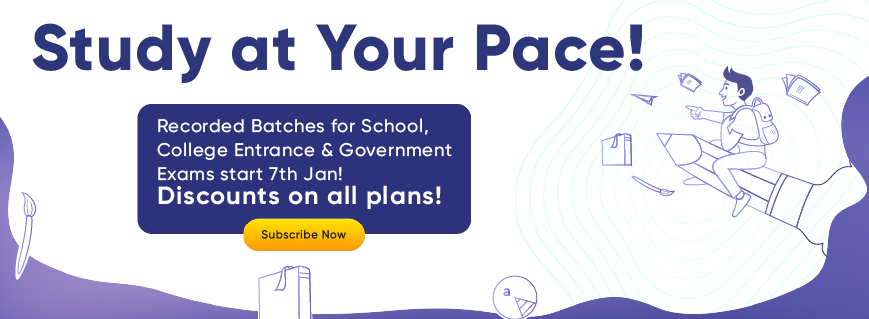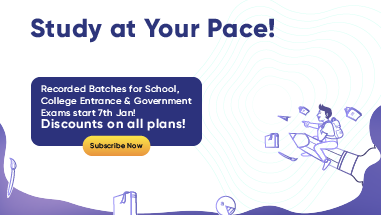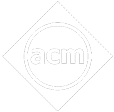- Written by aparna
- Last Modified on 28-03-2024
About Delhi Board Class 10 Exam 2024
The Board of Higher Secondary Education (BHSE) of Delhi provides non-formal education in Delhi. The board conducts exams across different levels- primary, middle and high. It conducts the exams like any other autonomous body with discretionary powers. It is advisable that the students follow the regular schedule of the exam so that they can score higher marks in the exams.
There are thousands of schools affiliated under Delhi Board Class 10. It will have a significant impact on the future of the child. Students must follow the proper schedule for the Delhi Board Class 10 to score higher marks in the exams. Continue reading to find the details about the 10th Delhi Board exams.
Delhi Board Class 10 Exam Summary 2024
It is very important for students to be aware of the Delhi Board Class 10 exam. The Central Board of Secondary Education (CBSE) and the Indian Certificate for Secondary Education (ICSE) are the two main bodies that oversee secondary and higher secondary education in Delhi.
Delhi does not actually have a state board. Both of these boards are in charge of holding board exams at the 10 and 10+2 levels and grant affiliation to the majority of Delhi’s schools.
| Name of the Board |
Particulars |
| Class |
10th Class |
| Exam Date |
February 2024 |
| Availability of Admit Card |
February 2024 |
| Result Announcement Date |
May 2024 |
Delhi Board Class 10 Official Website
https://bhsenewdelhi.in/home/
Delhi Board Class 10 Latest Updates 2024
Once any notification is released on the Delhi Board 2024 class 10 exam, we will update the same here.
Delhi Board Class 10 Application Process 2024
Delhi Board Class 10 application forms are tentatively available in the month of October. The application form is available on the official website. Students must keep a close check on the website’s notifications to get the Delhi Board Class 10.
Candidates who want to appear for the Delhi board Class 10 need to ensure they fill up the forms appropriately. They must fill out the form within the deadline to prevent any discrepancies. After filling out the application form, students must pay the registration fees to complete the submission process.
Delhi Board Class 10 Exam Pattern 2024
The Central Board of Secondary Education administers all Delhi Board Class 10 exams. Students must take the Delhi Board Class 10 exam and thoroughly understand the exam pattern before starting their preparations. CBSE modified the exam pattern according to the most recent syllabus and student needs.
A single annual exam will be held under the new CBSE examination scheme for Class 10. The Delhi Board Class 10 board exam now carries 80 marks; the remaining 20 marks are given to the internal school evaluations. This modification to the exam pattern was implemented in 2019 and has been adhered to.
Delhi Board Class 10 Exam Scoring Pattern
The total marks for Delhi Board Class 10 internal assessment are 20, and it is divided into four sections. Check the table below to have an idea about the detailed internal assessment conducted by the Delhi Board or CBSE:
| No. |
Sections Considered |
Marks |
| 1. |
Periodic Test |
5 Marks |
| 2. |
Multiple Assessments |
5 Marks |
| 3. |
Portfolio |
5 Marks |
| 4. |
Subject Enrichment Activities |
5 Marks |
| |
Total |
20 Marks |
Delhi Board Class 10 Exam Pattern- Total Time
As per the latest update, the exam time for each subject will be 1.5 hour or 90 minutes. The respective timetable has been shared in the article.
Delhi Board Class 10 2024 Syllabus
Students must be well-versed with the entire Delhi Board Class 10th exam syllabus before starting their exam preparations. Students studying for their Delhi board exams will benefit greatly from the CBSE Class 10 syllabus.
It comprises the duration of each period allotted for each unit, the distribution of unit marks, and the course structure. The Delhi Board syllabus for Class 10 includes information on these topics and reference materials, projects, assignments, and practicals.
Students can better organise their studies if they understand the Delhi Board syllabus for Class 10. Students will learn the topics and concepts that must be learnt in each subject through the CBSE board syllabus for Class 10. The board exam questions are also created using the Delhi Board 10th-grade curriculum.
Class 10th Delhi Board Mathematics Syllabus
The Class 10 Maths syllabus for Delhi covers a wide range of topics, including algebra, geometry, trigonometry, and statistics. It also includes practical components such as data handling and graphical representation. The Delhi Board Class 10 Maths syllabus is given in the table below:
| Chapter No. |
Chapter Name |
| 1 |
Real Numbers |
| 2 |
Polynomials |
| 3 |
Pair of Linear Equations in Two Variables |
| 4 |
Quadratic Equations |
| 5 |
Arithmetic Progressions |
| 6 |
Triangles |
| 7 |
Coordinate Geometry |
| 8 |
Introduction to Trigonometry |
| 9 |
Some Applications of Trigonometry |
| 10 |
Circles |
| 11 |
Constructions |
| 12 |
Areas Related to Circles |
| 13 |
Surface Areas and Volumes |
| 14 |
Statistics |
| 15 |
Probability |
Class 10 Delhi Board Science Syllabus
The Delhi Board Class 10 Science syllabus also focuses on real-world applications of science, encouraging students to think critically and creatively about scientific issues. In the table below, we have given the Class 10 Delhi Board Science syllabus:
| Chapter No. |
Chapter Name |
| 1 |
Chemical Reactions and Equations |
| 2 |
Acids, Bases and Salts |
| 3 |
Metals and Non-Metals |
| 4 |
Carbon and Its Compounds |
| 5 |
Periodic Classification of Elements |
| 6 |
Life Processes |
| 7 |
Control and Coordination |
| 8 |
How do Organisms Reproduce? |
| 9 |
Heredity and Evolution |
| 10 |
Light – Reflection and Refraction |
| 11 |
The Human Eye and the Colourful World |
| 12 |
Electricity |
| 13 |
Magnetic Effects of Electric Current |
| 14 |
Sources of Energy |
| 15 |
Our Environment |
| 16 |
Sustainable Management of Natural Resources |
Delhi Board Class 10 Exam Date 2024
Students appearing for the Delhi board Class 10 (2024) should know that the board will announce the exam date soon. The board exams, as per the previous year’s trends, are likely to conduct the exams around March 2024. There is no official announcement from the board regarding the exams.
Delhi Board Class 10 Admit Card 2024
The Delhi board Class 10 admit card will likely be released in March 2024. The board will release the admit card one week before the examination. Hence, students can tentatively check and download their Class 10 admit card in March 2024. Students will need to collect their admit cards from the respective school authorities.
After receiving the Class 10 admit card, students must check the details and ensure that the information mentioned is accurate.
Delhi Board Class 10 Result 2024
The Delhi Board Class 10 results will be available on the official website. Students can check the available information on the website. The Delhi Board Class 10 exams will be announced in the month of May 2024.
Usually, the exam results will be announced one to two months after the exams. Students must follow the instructions given by the board while downloading their results. Furthermore, they must keep their admit cards handy to check all the results for the 10th Delhi Board.
Delhi Board Class 10 Supplementary Exam 2024
After the declaration of the Delhi board Class 10 result, the timetable for supplementary exams will be given. Students who failed to qualify for the exams and did not manage to score passing marks can appear for the supplementary exams. They must fill in the supplementary exam form.
The supplementary exams are held during the month of July to August. The exam results are declared around September. Students can check the official website regarding the supplementary exam dates for Delhi board Class 10 2024.
Delhi Board Class 10 Study Plan to Maximise Score
A successful Delhi Board Class 10 study plan should be comprehensive and cover all subjects equally. It should include regular review of material, practice of sample papers and previous year’s question papers, and consistent preparation for tests and exams. Additionally, it should be flexible enough to allow for adjustments as needed to account for changing circumstances.
Delhi Board Class 10 Preparation Tips
A study plan is essential to getting good marks on the Delhi Board Class 10 exam since it allows ample time for preparing over the course of a set number of days. Discipline is the key to success, and students must strictly follow the study plan to maximise their scores. Making a subject-by-subject study schedule is essential to prepare for the Delhi Board Class 10 exam.
- Before creating their schedule, students must be well-versed with the Delhi Board Class 10 syllabus. Understand the Class 10 marking scheme for CBSE. Determine your strengths and weaknesses after carefully reviewing the syllabus and the scoring system.
- When making the study plan, you must consider the significance of all chapters. The chapters with the most weightage should receive more of your attention.
- Plan how you accomplish your daily, weekly, and monthly goals. With that in mind, decide your Class 10 Delhi Board study plan. Ensure that you complete them on time.
- Eat wholesome foods on time. No matter what, do not skip meals. Also, get enough rest. You should be in good health and be able to interpret your knowledge into marks if you want to give the exam your best effort.
Delhi Board Class 10 Detailed Study Plan
A detailed study plan is extremely important for Delhi Board Class 10 students. Students must ensure that they follow the exam schedule carefully and lay out their study plan accordingly. They may refer to the detailed study plan given below:
- Students should begin their Delhi Board Class 10 exam preparations ahead of time.
- Students believe they have plenty of time and begin studying when the Class 10 Delhi Board exams are approaching. So, start preparing in advance.
- Students must carefully plan and adhere to their academics. Everyone should make it a habit to plan ahead and study accordingly.
- Set aside time for each subject and strive to finish them all. Prepare your study plan in such a way that you do not feel pressured.
- Make a list of topics from the entire syllabus that you think are easy and the ones that are difficult. Make sure you give difficult topics the most time in your study plan and less time to topics you think are easier.
FAQs on Delhi Board Class 10 2024
Q: What is the full form of BHSE Delhi?
Ans. The Board of Higher Secondary Education, Delhi, is an educational board responsible for conducting and managing examinations across the state for students in various grades.
Q: Does Delhi Board Class 12 adhere to CBSE guidelines?
Ans. Yes, the Delhi Board Class 12 strictly adheres to the CBSE guidelines.
Q: When are the Delhi Board Class 10 examinations held?
Ans. The Delhi Board Class 10 exams will be held in the month of March 2024 tentatively.
Q: What books should I use for the Delhi Board Class 10 exams?
Ans. Students can use NCERT Books for Delhi Board Class 10 Exam preparation.
Q: Where can I find all information regarding Delhi Board Class 10?
Ans. Students can find all the relevant Delhi Board Class 10 information on this page.
Delhi Board Class 10 School List
The school system in Delhi, the capital of India, is well-developed and separated into various levels. Primary, secondary, and senior-secondary levels of education are all included in school education. The union territory’s private, government-aided, and public schools are governed and managed by the Directorate of Education, Government of NCT of Delhi.
Government or private groups are in charge of running schools in Delhi. The Central Board of Secondary Education (CBSE), Council for the Indian School Certificate Examinations (CISCE), and National Institute of Open Schooling (NIOS) are associated with the public and private schools in the union territory. English and Hindi are the official languages used in Delhi schools.
Given below is the list of some schools in Delhi:
| Sr. No. |
School Name |
Locality |
| 1 |
A R S D Sr Sec School |
Ajmeri Gate, Delhi |
| 2 |
A S V J Sr Sec School |
Daryaganj, New Delhi |
| 3 |
Abner Memorial School |
25 Ferozshah Road, New Delhi |
| 4 |
Air Force Public School |
Subroto Park (AFGJI), New Delhi |
| 5 |
Adarsh Model School |
96 Pratap Nagar, New Delhi |
| 6 |
Bal Bharati Jain Public School |
B-47/48, Jeewan Park, Pankha Road |
| 7 |
Air Force Ser. Sec. School |
Palam Delhi Cantt., Delhi 110010 |
| 8 |
Bal Sthali Public Sec. School |
Kirari, Nagloi, Delhi 110040 |
| 9 |
B. J. Singh Khalsa Girls Ser. Sec. School |
East Patel Nagar, New Delhi |
| 10 |
Bhatnagar International School |
A-1 , Paschim Vihar, New Delhi 110063 |
List of Future Exams After Delhi Board Class 10
Students who have completed the Delhi Board Class 10 exams must make plans for their next academic step, including choosing one of the many courses offered after grade 10. This requires thorough preparation and research because subjects beyond the tenth grade include courses in the Arts, Science, and Business, to name a few.
Students in Delhi Board Class 10 and other higher classes have access to various competitive exams and incentive schemes. These rigorous exams examine students’ mental aptitude and intellectual capacity, and those who succeed are given scholarships. Below we have provided a list of future exams:
- NTSE (National Talent Search Examination): One of the most well-known competitive assessments for school children is a national-level examination cum scholarship programme. The main goal of the NTSE is to identify pupils with excellent academic skills. It is based on the NCERT curriculum. Passers will get a scholarship for the entire academic year if they pass this test. There will be a Mental Ability Test (MAT) and a Scholastic Ability Test (SAT).
- Scholastic Aptitude Test (SAT): For students who wish to know where they stand in a foreign college’s rankings after tenth grade, this is an obvious choice of a competitive exam. However, an increasing number of Indian colleges and universities accept SAT results in lieu of their own entrance exams.
- Class 11 Exam: After Class 10, students can enrol themselves for Class 11 in various streams. Students can choose their respective streams based on their career interests. The exams of Class 11 are conducted every year in the month of January/February.
- Class 12 Exam: Class 11 and 12 can be said to integrate courses in their respective streams. Class 12 exams are crucial in a student’s life. Class 12 exams are conducted in the month of March/April every year.









